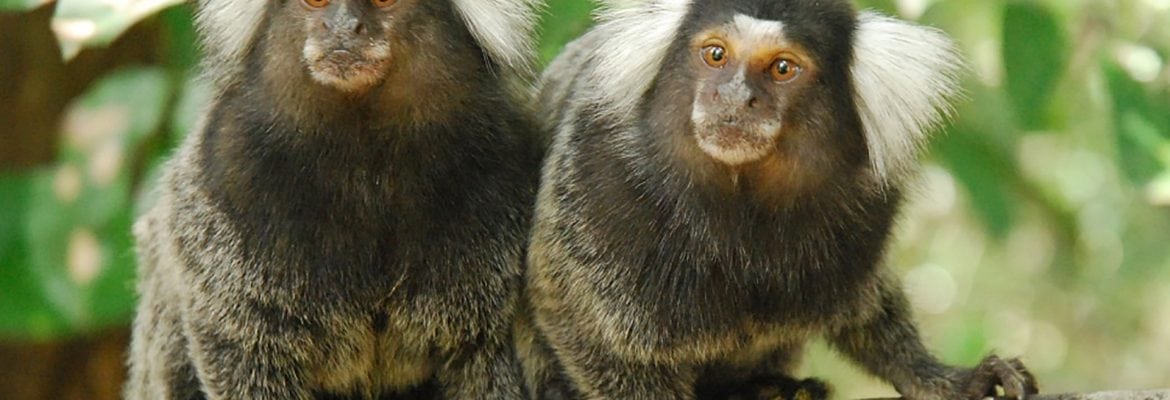
Common marmoset
Conservation status: IUCN – LC (Least concern); CITES – Appendix II
Geographic range: Brazil.
Physical description: Common marmosets are small primates which weigh in at about 256g and grow up to 15cm long. Their tails are also 15cm long and they are mostly grey with darker stripes. The coat around their neck is darker and there is typically some white fur on their face and foreheads. Adult common marmosets have big white ear tufts and the young have lighter brownish yellow coats. Common marmosets are adapted for life in the trees where they can use their sharp round nails to hang onto branches.
Biology: Common marmosets are most active during the early morning and late at night. During the day they prefer to nap or to groom each other. Usually they live in groups of about 8 individuals but the group size can vary from 3 to 20. In the wild, marmosets are polygamous as a single female will mate with more than one male during the rutting season. Gestation lasts about 150 days and the female usually gives birth to twins which are then reared and nursed by the group. These animals are very playful and sociable and use a combination of body language, vocalizations and facial expressions to communicate. They can climb up vertical trees and can jump considerable distances with their 4 strong legs. For this, their tail helps them maintain control.
Lifespan: In the wild about 10-12 years, in captivity up to 16 years.
Food habits: Generally feed on tree sap but also sometimes eat fruit, insects and small vertebrates.